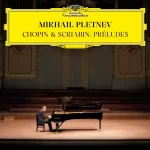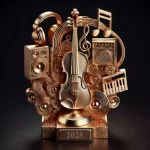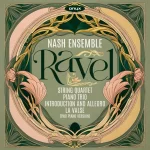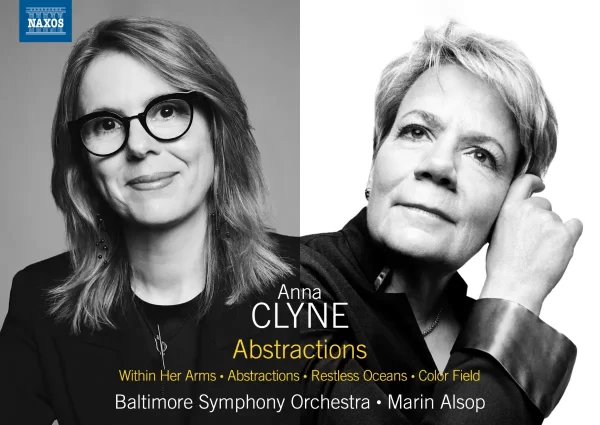Last updated: January 2025
Franz Schubert (1797-1828) is perhaps the clearest representation of a bridge between the classical and romantic era in classical music. His melodic inventiveness, the scope of his artistic vision and his concentrated output put him among the greats of all classical music composers.
Contrary to other composers which we covered on our ”Classical Music Beginners Guides” series, Schubert was not well known during his lifetime outside of an intimate circle of admirers. One of which was the Baritone Johann Michael Vogl, who recognized the young composer’s uncanny ability with the German Lied. In this field, Schubert reached artistic heights that combined special sensitivity to word, voice and musical combinations, making nothing short of a breakthrough in the genre. And indeed, many musicologists and performers recognize that a basis of many (if not all) of Schubert’s musical aspiration comes from the human voice and lyrical melody.
From the classical composers who preceded him, mainly Beethoven and Haydn, he continually learned and perfected his management of structure within a musical form. This didn’t come easy; many of his early attempts in the Symphony, Sonata and String Quartet genres are not as successful as his later works, even if some of which are a joy to listen to, such as the early Symphonies No. 4 and 5, or the piano sonata D.664.
While pursuing many unsuccessful attempts of spreading his large-scale music, he wrote numerous compositions for house gatherings, which was named “Schubertiads”, where the gatherers joined Schubert either in song, chamber music or piano playing in two or four hands. We owe many of the composer’s most famous pieces to these circumstances, some mentioned below.
The final few years of Schubert’s life saw a flow of masterpieces, some of which the world took many years to appreciate. This came with the advancement of incurable illness and hard, burdensome poverty. After the composer’s death in 1828, aged 31, we were lucky to have many of his close admirers keeping many of Schubert’s manuscripts, letters and drafts. It took many great characters to revive Schubert’s music, among them figures such as Brahms, Schumann and Mendelssohn. Because only a few of Schubert’s pieces were published during his lifetime, many of them lack an opus number. This is why it took a dedicated musicologist named Otto Erich Deutsch (1883–1967) to chronologically catalog all the known pieces, a project he completed in the 1950s. This is the reason most of Schubert’s pieces are marked by a “D.” number.

“Schubertiads”, painting by Moritz von Schwind
His piano music, mostly neglected up until the 1920s, was revived by musicians such as Artur Schnabel and Edwin Fischer, who can be partially credited for injecting it to the regular piano repertoire – pieces such as the late piano sonatas, impromptus, Moment Musicaux and the difficult “Wanderer fantasie”. Concert goers of symphony and chamber music are now often met with Symphonies such as the 5th, 8th (“Unfinished”) and 9th (“The Great”) regularly performed by the greatest orchestras, and chamber ensembles have the piano trios, String Quartets and quintets as part of their regular repertoire.
Some of Schubert’s music, especially the late masterpieces, need patience and long breath. The musical climaxes are not coming quickly, generally speaking, and some of the music arguments demand time to take shape, which makes for sometimes long movements. As many classical music enthusiasts know, the music is worth the effort.
Here are 10 pieces which represent a good place to start if one wants to get familiar with Schubert’s music. Our recordings recommendations are also intended for the beginner listener and represent the best version listeners can get familiar with the piece. Don’t forget to subscribe to our classical music newsletter and be notified for more guides, new classical music album reviews and news.
Symphony No. 8, D. 759 (“Unfinished”)
This is one of the most famous and well-loved pieces by Schubert and not only that, one of the best known in the history of classical music. There is still debates on the circumstances of which this Symphony was composed, and why it was set aside with only two movements finished. There is a draft of the third, “Scherzo” movement in piano form, and some speculate that Schubert wanted one of the orchestra pieces from the incidental music written for a play named “Rosamund” as the fourth, final movement. Some have tried to offer a “complete” performance based on this assumption and existing material (See this recent performance by Concentus Musicus Wien under Stefan Gottfried as an example), but in all honesty, the two finished movements are more than enough appreciate this major orchestral achievement.
It’s a dark, often chilling piece that foresees what will become the Romantic era of orchestral music. The tension building is long, the orchestration totally original and the harmonic inventions are brilliant.
When Carlos Kleiber conducted the Vienna Philharmonic in the 1970s, magic happened, and his version of the 8th symphony is second to none. The Viennese play this music like no other, but preserve a freshness while preserving their traditional and. recognizable sound. The recording still sounds good, especially in the latest digital transfers.
Symphony No. 9 (“The Great”)
Schubert’s greatest all-around achievement in the field of the Symphony met with forceful resistance when it was first introduced, mainly because of the sheer length of a typical performance, lasting about 60 minutes. The first movement is heavily Beethoven and Mozart influenced (which is not to say the music is not delightful), but Schubert really comes to his own in the next three movements, with the finale looking forward to lengthy symphonic movements of the likes of Bruckner.
There are many legendary performances of Schubert “Great” Symphony, namely Solti’s Vienna Philharmonic version (Decca) and Wand’s Berlin version (RCA), but this relatively new version do the score full justice. Abbado’s hand-picked players of the Orchestra Mozart are making this more of a chamber music piece, moving away from the bombastic to the subtle intricacies of the orchestration. Abbado’s transparent, lean way with small ensembles didn’t always work, but in this case it does, in a state of the art recording.
Piano Quintet, D. 667 (“Trout”)
This lovely quintet took its name from the lied “Die Forelle”, the basis for the theme and variations in the fourth movement of the piece. Unconventionally for a piano quintet, the piano is not joining a classical String Quartet (2 violins, viola and cello), but rather to 4 players containing contrabass instead of a second violin.
Most likely written for group with diverse performance capabilities, the violin is the prominent instrument here in terms of thematic leading and (mild) virtuosity, while the piano part is less demanding than other solo or chamber works by the composer, consist of many “unisono” portions, where both hands play the same phrases. It is one of the sunniest, optimistic and cheerful works by the often gloomy composer, and one of his most popular.
Two of the best performances the Trout Quintet are, unfortunately, hard to come by in physical CD (They are available in all of the streaming services): Alfred Brendel with a group of young string soloists, including Thomas Zehetmair and Tabea Zimmermann, or the more subtle Andras Schiff performance with members of the Hagen Quartet. The link below is to the Brendel performance. If you can’t find the two versions mentioned, try another fine accounts by many other world-renowned performers who recorded this piece, take your pick at your favorite artist.
Piano Trio No. 2 D. 929
Schubert’s two late piano trios, Op. 99 & 100 (D. 898 & D. 929) are another late pieces (1827), where Schubert really comes to master the genre of the piano trio in general and the sonata form in particular. Contrary to the “Trout Quintet”, the piano part (as well as the violin and cello), is technically highly demanding. Although the second trio starts off with a rather optimistic, cheerful theme, it’s a dark piece, which the second movement is the heart of. This chilling movement was described as a “funeral march” by some (though its rhythm is not classically march-like). The constant bit are passing through the three instruments in intricate transpositions, making it one of Schubert’s greatest chamber achievement. It was also used as a soundtrack to many plays, tv shows and features films, so you might find it familiar on first listening. The final two movements are entering into a smilingly more sunny territory, but the effect of the dark second movement is reappearing in the central episode of the Scherzo and in the last movement as a direct quote, like a reminder of a danger looming above.
The Beaux Arts Trio’s set of the two piano trios has never seemed to stop delighting listeners and has never been out of circulation. They bring authoritative playing, knowing the score from within, after decades of experience playing these pieces (especially the great pianist of the trio, Menahem Pressler).
String Quintet, D. 956
The String Quintet D.956 is unusual not only in its scope, depth and artistic heights, but for its scoring: Contrary to other String Quartets in the history of classical music, it is scored not to a String Quartet with a second viola, but a second cello. This gives more weight to the sound and a darker tone throughout. Schubert’s last chamber work, It is considered by many to his best, and among the best-written masterpieces of chamber music in history. It takes some patience and several listening to fully appreciate it; The movements are long and relatively slow in tempo. The essence here is, like many of Schubert’s late works, inward-looking than outward brilliance of the players.
The Alban Berg performance of the piece is profound, with a perfect balance of the ensemble with the additional cellist (Heinrich Schiff). A clear first choice when wanting to get acquaintance with the piece. A fine, digital recording quality as well.
String Quartet No. 14 D. 810 (“Death and the Maiden”)
One of the world’s most famous String Quartet takes its name from a lied written in 1817 (“Der Tod und das Mädchen”, D. 531), depicting many cultural references of a maiden from the material world taken into death from a mysterious character from the afterlife. The lied is the basis of the third movement, a theme and variations.
But the sheer scope and bursting energy in all movements are what made this quartet so unique and revolutionary in its day, contrasting almost violent first movement with serene slow moments.
A recent version of the piece by the Chiaroscuro Quartet is worth considering (read our review here), but The Takács Quartet bring all of these qualities to their performance and are perfectly attuned to Schubert sometimes contradictory character. They are also served by a well balanced, high recording quality.
Impromptus, D. 899 and D. 935
Other than some of the piano sonatas, Schubert’s Impromptus are his most often heard (and played) piano pieces. Along with the 6 “Moment Musicaux”, often combined with the Impromptus on record, they represent a huge contribution to the piano literature. Schubert way of writing to the piano is unique, with the singing voice always as the basis of a great melody, with sophisticated accompaniment writing, making all ten fingers participate in the playing. This rich harmonic sonority is not easy to handle and makes for a challenge even for the greatest of pianists.
Schubert’s Impromptus are separated into 3 groups – D. 899 (Op. 90) contains the more familiar pieces, while D. 935 is perhaps a bit darker, and its highlight is the great theme and variations of the third Impromptu in this group. Some music theorists claim the “3 piano pieces” D.946 was also conceived as a third set of impromptus for publications, but were not published due to the composer’s death. It’s a fine set of piano pieces, and the most technically demanded from the 3 groups.
Many of the greatest pianists recorded the 2 Impromptus sets D. 899 and D. 935, with leading sets by Brendel, Pires, Uchida, Schiff, Lewis and too many more to count. None have surpassed this marvelous set by Radu Lupu, recorded in London for Decca in 1982. The digital recording still sounds remarkable, and this can be purchased without hesitation as an introduction to the Impromptus, or for even the already busiest of a record collection.
Piano Sonata No. 20, D. 959
Like in the cases of other musical genres, Schubert took time to come to his own with the piano sonata form. His early sonatas, although charming, is miles away from his achievements in his final years.
The three last piano sonatas, D.958-960, along with the sonata-Fantasie D. 894 are all masterpieces of grand proportions and marks an indispensable contribution to the piano literature.
The piano sonata D. 959 is perhaps the all rounded in terms of thematic interest, motivic development and overall musical character (some, though, prefer the D.960). The second movement is a tragic crying out, with an outburst of rage rarely heard of in the genre in its day. The finale is one of the most lyrical, charming and memorable themes Schubert ever produced.
From Alfred Brendel’s many recorded performances, this 1970’s performance finds him at his best, and is a good sample of a great Schubert expert. The double Phillips addition includes the last three sonatas in excellent performances, and the finale of D.959 is one of the most beautiful Schubert on record.
Fantasy in F minor for piano duet, D. 940
Schubert wrote many four-hands piano music, mainly for his friends and pupils. This wasn’t meant as a public showpiece but as a private affair. Nonetheless, this Fantasia is one of the masterpieces for four-hand piano music, or any piano music for that matter.
It’s built as a combination of Sonata form, Rondo and free-fantasy, with many motivic repetitions and contrapuntal writing giving this 20 minutes piece a sense of unity within the usually free fantasia form.
There has never been a better representation of this piece than this 1984 recording by Murry Perahia and Radu Lupu. The synchronization between the two in matters of phrasing, rhythm and dynamic is of siamese twins, and though there are some fine later versions of the Fantasia, this version has never been surpassed.
Winterreise, D. 911
Schubert was not the first to write the artistic song, or “lieder”, but he is regarded as the first major composer that incorporated all of his artistic efforts and musical talent into this genre. What makes Schubert’s lieders unique are the tight connection between the sang words and musical tension and character, unmatched by previous composers, and not many since. It’s also worth mentioning that the piano accompaniment of the songs contains some of the most brilliant and effective piano writing Schubert produced.
Schubert wrote hundreds of songs during his short lifetime, and it gave him a lot of appreciation in his circles of friends and, contrary to his other compositions, in wider circles.
In some cases, Schubert composed “song cycles”, concentrating around a certain poet or theme, such as in his most famous song cycle, the late “Winterise” (1827). Based on poems by Wilhelm Müller (1794-1827), this 24 song cycle deal with love, disappointment and wondering as the essence of the romantic spirit, and it’s Schubert at his absolute best.
There may be no other proponent of the Schubert lieder in the 20th century than Dietrich Fischer-Dieskau, who saw reviving and performing Schubert songs as a life mission. Although he knew every tiny detail and musicological theory connected with each song, there is a touching naturalness in his voice and characterization of the songs, never giving a feeling of an opera singer that happens to be singing with an accompanying pianist. This is how Schubert heard the songs sang in his days, and in this great singer’s voice, it sounds just right. From Fischer-Dieskau’s many recorded versions of Winterreise, his mid-sixties version with Jörg Demus on the piano shows him on best form and should be in every collection.
Bonus: Moment Musicaux D.780, No. 3
One of the most famous tunes in classical music history, this short piano piece is part of the “Moment Musicaux” book, published to amateur pianists during Schubert lifetime as Op. 94 (D. 780). This German dance is part of a book of profound 6 solo piano pieces, and is also recommended as they represent Schubert the piano composer at his best.
There is no better proponent of these pieces than a great Schubert expert, Sir András Schiff, and his take on this small dance will surely put a smile on your face.
This concludes our beginners guide to Schubert. Visit our Beginners Guides to classical music page and get to know more classical music composers. Sign up to our newsletter to get updated on new guides when they are published.
Support Us
We hope this guide has helped you navigate the wonderful world of classical music! If you enjoyed this free resource, consider making a donation to The Classic Review. Your generosity helps us keep the music playing by allowing us to publish informative guides, and insightful reviews. Every contribution, big or small, allows us to continue sharing our passion for classical music with readers like you.
Donate Here
Albums included with an Apple Music subscription:
Latest Classical Music Posts
- 3 Best Wireless Headphones For Classical Music – 2026
- Review: Bach – Cantatas BWV 4, 106, 131 – Ensemble Correspondances, Sébastien Daucé
- Review: Mahler – Symphony No. 7 – National Symphony Orchestra – Gianandrea Noseda
- Review: Scriabin & Chopin – 24 Preludes – Mikhail Pletnev, Piano (2025)
- Year In Review – The 10 Most Read Classical Music Reviews of 2025
- Review: Ravel – Nash Ensemble
Read more classical music reviews or visit The Classic Review Amazon store
Follow Us and Comment:
[wd_hustle id=”HustlePostEmbed” type=”embedded”]

















